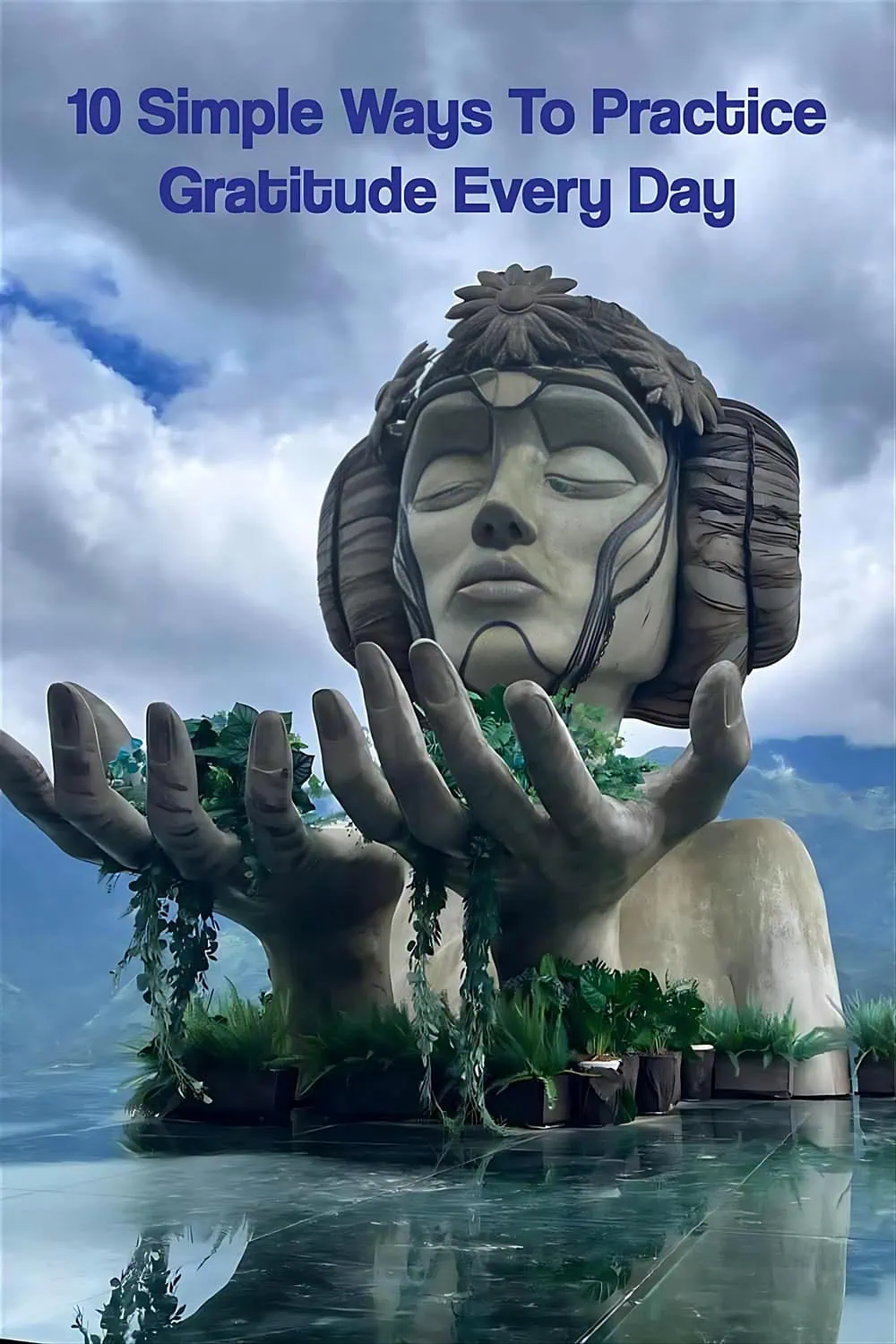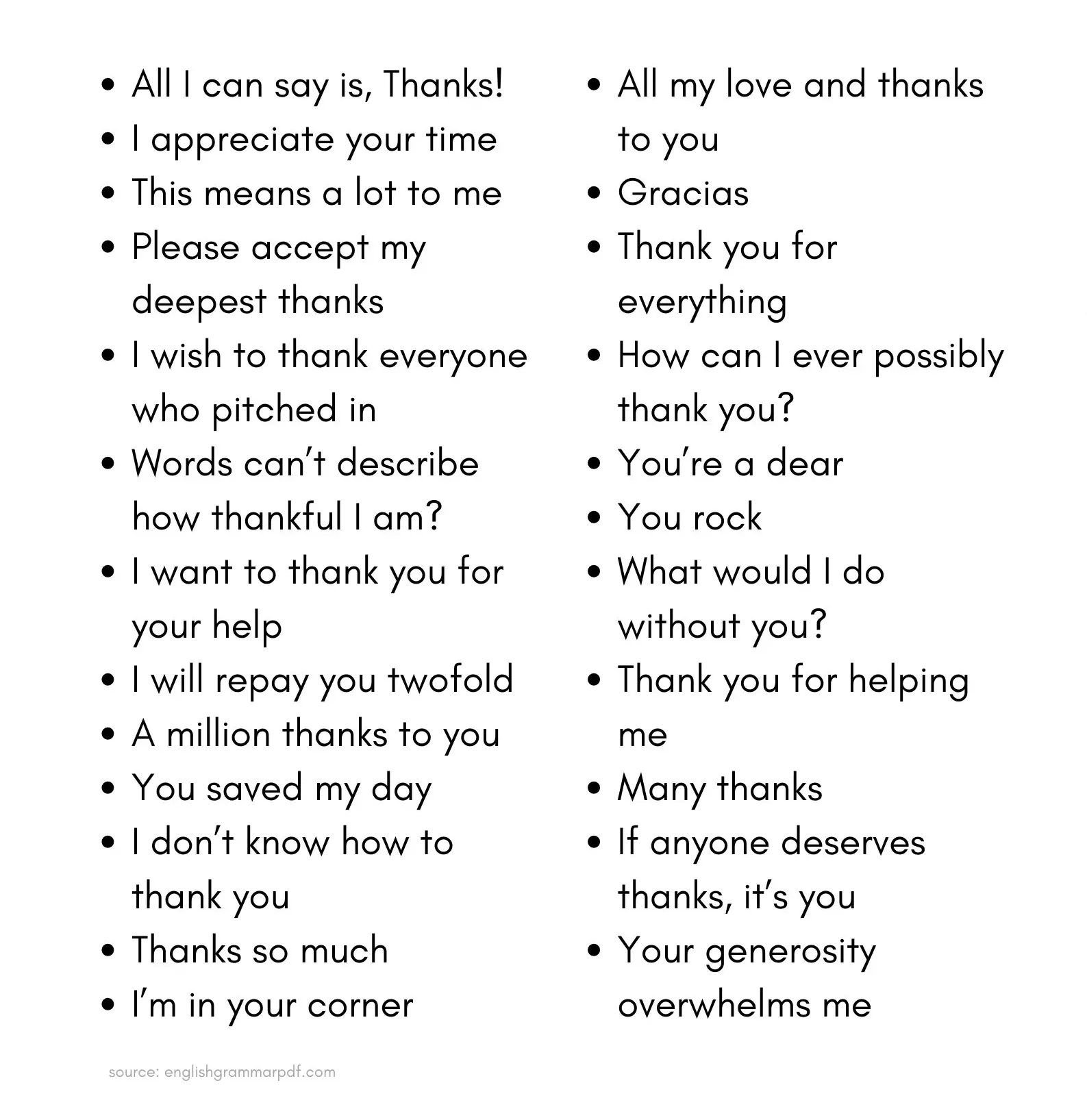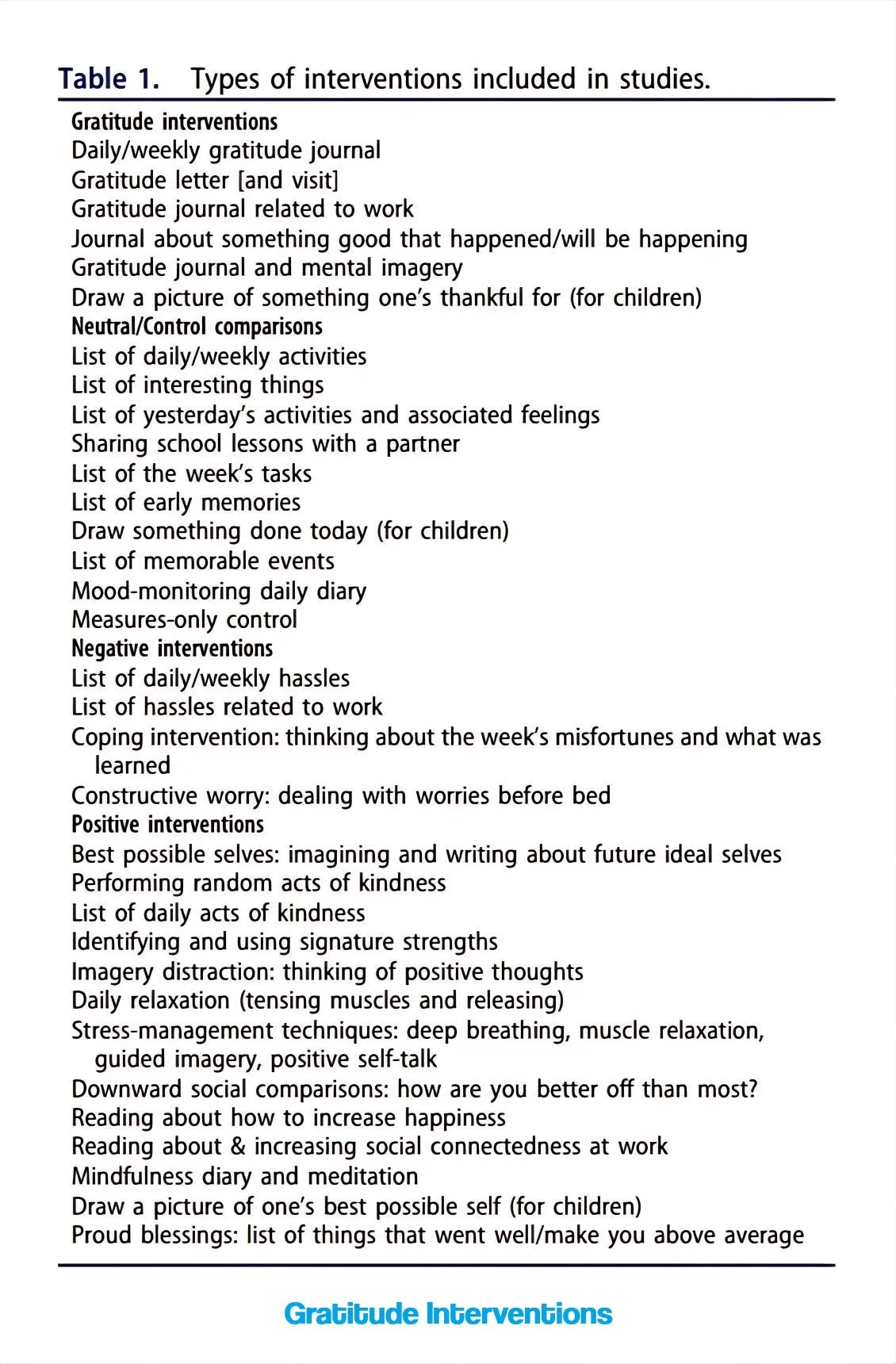— By Dr. Sandip Roy.
Gratitude is feeling thankful from the heart. When you start to be grateful for a few minutes a day, it can boost your mental resilience and make you happier.
Gratitude practice helps you:
- notice the good things around you more mindfully
- accept other people’s experiences without judging
- be less self-centered and more generous
- avoid worrying and overthinking
- strengthen your relationships
- keep your stress in check
Social psychologist Leah Dickens writes:
“If a simple and free practice, done for 5 min every day, can help with things like positive affect and life satisfaction, there seems to be no good reason not to do it.”
Here are 10 simple ways to practice gratitude every day:
1. Reflect on your blessings
This simple activity will help you avoid the trap of negativity and shift your focus from what you lack to what you own.
A Short Guide to Counting Your Blessings
- Take a few minutes each day to think about the things in your life that you are grateful for.
- If you find it hard to find things you’re grateful for, then look around in your home and imagine your life without some of the things and people there. Then express thanks for having them in your life. With time, it becomes easy to reflect on what is going well in your life.
- You can do this as a daily ritual or only when you feel your mental outlook might benefit from it, such as after a particularly challenging day. Setting aside a regular time, like first thing in the morning or before bed, can help make it a consistent habit.
- Start by noting 3–5 things you feel blessed for — your health, talents, resources, and relationships. Tell yourself, that you feel blessed for waking up to a new morning, having a loyal friend, being surrounded by a loving family, and being able to afford a good cup of coffee.
2. Start a gratitude journal
A gratitude journal is a diary to record things for which one is grateful. It is a way to practice gratitude at the end of the day.
Gratitude journals are often used as therapeutic tools to help people find balance in their lives and improve their well-being.
- The best times are in the morning or before bedtime.
- Find an area in your home where you feel at ease, such as a favorite chair or a cushion.
- To get into the habit of gratitude journaling, play specific music in the background every day.
A study by Dr. Robert A. Emmons found that people who kept gratitude journals reported more positive emotions and better physical health than those who did not.
A Short Guide To Start A Gratitude Journal
- Time: When you start, choosing the right time to reflect is key. Set aside 5–10 minutes when you can “step outside” your normal routine and mindfully reflect on what you’re grateful for. This could be first thing in the morning, during your lunch break, or before bedtime.
- Frequency: Aim to do it once a week at first. Later, you might want to do it more often, and that is okay.
- What To Write: Start by writing down 3 to 5 things you are thankful for now. These can range from small, everyday moments (like a coworker’s friendly smile) to broader qualities of your life (good health, a special talent, or a close friendship).
- Use Variety: You may get bored with repetitive gratitude practices, so try mixing things up. On some days, just list your “blessings.” On other days, add details on what you’re grateful for, and why. Try varying the focus—writing about gratitude for people one day and on nature’s blessings the next day.
- Speak Your Gratitude: Another way is to express your gratitude directly to someone — telling them in person how much you appreciate having them in your life — and then writing about the experience.
- Learn how to look back on gratitude from this highly popular “Three Good Things” Guide.
3. Share your gratitude with others
Take a few minutes to tell someone in your life what you love about them; it will boost your gratitude.
We don’t do it too often because it takes courage to express our gratitude to others.
It can be hard at times, but when you take the time to appreciate those around you, they feel good knowing that their existence matters.
The key is to find a way for you to do this in a small way every day. One way is to ask someone you meet how are they doing, and then look at them to listen to their answer.
Another way could be to make a short list of things that you are grateful for with a particular person and share it with them.
Yet another way is to take a few minutes to write a note (even a post-it note) to tell someone in your life that you appreciate them and value what they do.

4. Practice mindfulness
Mindfulness is a skill that can help you to cultivate more gratitude in your life. It helps you become more aware of your passing thoughts and feelings and how they affect your experience.
Mindfulness is the practice of being fully present with yourself and the world around you, without judgment or critique. It’s about noticing what’s happening, without trying to change it. It’s about accepting things as they are, rather than wishing they were different.
When you learn to pay attention to the present moment with mindfulness, you can find things to be grateful for in your surroundings.
5. Perform little acts of kindness
Performing random acts of kindness can help you feel happier and more grateful in life.
Researchers found that kind people are happier and have happier memories. And happy people are more kind in the first place, and they can become even happier simply by counting acts of kindness for one week.
“Results showed that: (a) Happy people scored higher on their motivation to perform, and their recognition and enactment of kind behaviors. (b) Happy people have more happy memories in daily life in terms of both quantity and quality. (c) Subjective happiness was increased simply by counting one’s own acts of kindness for one week. (d) Happy people became more kind and grateful through the counting kindnesses intervention. Discussion centers on the importance of kindness in producing subjective happiness.” — Happy People Become Happier Through Kindness, Otake & Shimai, 2006
Take note that your kind act does not have to be big; it can be something as small as holding the door for someone, giving up your seat on public transit, or helping someone with a heavy load.
Just do something nice for someone else. Ask someone how can you help, and help them if you can. At least find an opportunity to say a few kind words to someone who is going through a tough time.
6. Meditate on gratitude
Find time each day to sit in stillness and focus on the things you are grateful for.
Gratitude meditation is a simple and powerful way to improve your emotional climate. You can do it from anywhere, anytime, and it only takes 2-5 minutes.
- Start by taking a few deep breaths, in through your nose and out through your mouth. It will calm you by stimulating your vagus nerve.
- Think of someone important in your life (like your parents, partner, friends, or pets). It could also be something meaningful that brings joy to your life.
- Make a clear mental image of this person or item (like, what they look like, how they talk and smile, what they like).
- Express your gratefulness for them. Repeat the following sentence to yourself: “I am so grateful to you for __.”

7. Express gratitude publicly
When you share your gratitude experience with others, you increase the positive effect of expressing gratitude.
- People you could tell about your gratitude experience include family, friends, coworkers, clients, and others.
- You could also share your gratitude on social media or public forums to inspire others to do the same.
- Take a moment to publicly express your gratitude to someone who has positively impacted your life.
- Design a social media graphic with a few words of your heartfelt thank you and why.
8. Be thankful for the gift of life
We should always be grateful for the gift of life every day. It is a gift that many will cease to have when the sun sets today.
We should never forget to show our gratitude for this gift and be thankful every day.
The world is a beautiful place to live in. Be grateful for the gift of life to get the chance to enjoy this beauty for another day.
Reflect on the sunrise and the blue sky, listen closely to the chirps of birds, note the many unnoticed things in nature, and be grateful for having experienced them before you go to sleep tonight.
9. Find the silver lining
When faced with a challenge or difficult situation, try to find something to be grateful for.
Try looking forward with hope and optimism.
Being optimistic and hopeful for a brighter future, especially when the current times are uncertain and difficult, can make you more resilient to surrendering to adversity.
How To Say Thanks?

10. Read a book on gratitude
Here are five great books on gratitude that I would recommend:
- “Gratitude” by Oliver Sacks (his lat book)
- “The Grateful Life: The Secret to Happiness and the Science of Contentment” by Nina Lesowitz and Mary Beth Sammons
- “Gratitude Works!: A 21-Day Program for Creating Emotional Prosperity” by Robert A. Emmons
- “Thanks a Thousand- A Gratitude Journey” by A.J. Jacobs
- “The Gratitude Journal for Women: Choose Gratitude Every Day” by Paper Peony Press
Types of Gratitude Activities (From Research)
The table below shows a list of gratitude activities that researchers have used in various studies. Find an activity that you feel is genuine, enjoyable, and suits you best (called person-activity fit). With trial and error, you can build a gratitude routine that is uniquely helpful to you.
Here’s what to do in each gratitude intervention in the table above:
Gratitude Interventions
- Daily/weekly gratitude journal: Write down things you are thankful for every day or every week.
- Gratitude letter [and visit]: Write a letter to someone thanking them for something they did and, if possible, visit them to read it out.
- Gratitude journal related to work: Focus on things you are grateful for at your job and write them down.
- Journal about something good that happened/will be happening: Note down positive events that have happened or ones you look forward to.
- Gratitude journal and mental imagery: Write about what you are thankful for and imagine those moments vividly in your mind.
- Draw a picture of something one’s thankful for (for children): Kids can draw pictures of things or people they appreciate.
Neutral/Control Comparisons
- List of daily/weekly activities: Write down what you do every day or week.
- List of interesting things: Make a list of things that you find fascinating.
- List of yesterday’s activities and associated feelings: Note what you did yesterday and how you felt about it.
- Sharing school lessons with a partner: Talk about what you learned in school with a friend.
- List of the week’s tasks: Write down tasks you need to do for the week.
- List of early memories: Recall and list your early childhood memories.
- Draw something done today (for children): Kids can draw something they did during the day.
- List of memorable events: Make a list of events that you’ll always remember.
- Mood-monitoring daily diary: Keep track of your mood every day.
- Measures-only control: Just record data without any specific activity.
Negative Interventions
- List of daily/weekly hassles: Write down the small troubles you face daily or weekly.
- List of hassles related to work: Note down issues or difficulties you encounter at work.
- Coping intervention: Think about the week’s misfortunes and what was learned: Reflect on the problems you faced during the week and what you learned from them.
- Constructive worry: dealing with worries before bed: Spend some time thinking about your worries and finding solutions before going to sleep.
Positive Interventions
- Best possible selves: imagining and writing about future ideal selves: Think about your best future self and write about it.
- Performing random acts of kindness: Do kind things for others without expecting anything in return.
- List of daily acts of kindness: Keep a record of kindful things you do each day.
- Identifying and using signature strengths: Discover your personal strengths and use them.
- Imagery distraction: thinking of positive thoughts: Distract yourself with happy thoughts when you’re feeling down.
- Daily relaxation (tensing muscles and releasing): Practice relaxing by tensing and then relaxing your muscles.
- Stress-management techniques: deep breathing, muscle relaxation, guided imagery, positive self-talk: Use methods like deep breathing, relaxing muscles, imagining calm places, and talking positively to yourself to manage stress.
- Downward social comparisons: how are you better off than most?: Think about how you are better off compared to others.
- Reading about how to increase happiness: Learn by reading about ways to become happier.
- Reading about & increasing social connectedness at work: Read about and try to improve your connections with colleagues.
- Mindfulness diary and meditation: Keep a diary of your mindfulness practice and meditate regularly.
- Draw a picture of one’s best possible self (for children): Kids can draw a picture of themselves as they want to be in the future.
- Proud blessings: list of things that went well/make you above average: Write about things that make you proud and what went well in your life.
Final Words
Taking people for granted slowly kills your attitude of gratitude. Don’t do it. The antidote is to practice gratitude with others, most of all those people who mean a lot to you.
Pick one activity from above and put it into practice today. As you make it a daily practice, notice how much better your life becomes.
Find something to be grateful for every day. What was that for you today?
√ Also Read: Why Is Gratitude More Important Than You Think?
√ Please spread the word if you found this helpful.
• Our Story!

